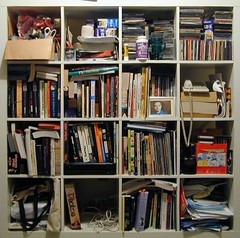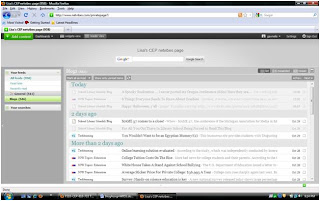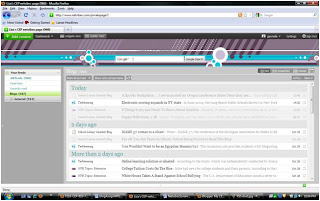So far, in CEP 810, I am achieving my main goal of increasing my confidence in using new technology. The more technology I am exposed to, the more quickly I am able to grasp new programs and concepts. I am also using new programs more regularly and even considering using them in my everyday life.
I am much more comfortable with many “tech” words that my students use. The word “blog” is no longer foreign to me, but a part of my everyday language. This is helping me feel more confident that I can teach my students more about things that they have already learned about through their everyday experiences.
I had hoped to get more comfortable with online office tools such as Google Presenter, but I have been pleasantly surprised to be learning about Prezi as a presentation tool. I had never heard of Prezi before, but now I am very excited to learn more about it, use it in my teaching, and share it with my colleagues. I am also happy that I have been able to learn to use it on my own- this shows me that I am becoming more of an independent learner of technology. Even though I wanted to become more comfortable with the basics of the online office tools through Google, I realize that I must be gaining skills if I am able to apply my knowledge to a technology that is brand-new to me, like Prezi.
I think Prezi will also be a great resource for me in the future as I work to incorporate different teaching and learning strategies into my classroom. Prezi will allow me to integrate audio, video, images, text, and other formats to reach a variety of learners. Seeing Prezi for the first time reminded me that it is important to teach in a variety of ways to capture the interest of all students.
This course has not yet given me an opportunity to create a learning tool for my students, but learning to use Prezi has definitely given me opportunities to create more for my students. I have also been pleased to learn more about copyright and fair use, since part of my job is helping students understand the importance of copyright, citation, and plagiarism. I have also been happy to come across many useful websites and resources to show my students.
The SIG project has taught me a lot about how audio devices such as ipods can be useful in the classroom. I will definitely apply this knowledge in the future- either by using pre-created online audio tools, or by creating my own audio books for my students to use.
I am surprised to say that one of the simplest assignments, the list of annotated resources for the SIG project using diigo.com, is one of my best examples of teaching with technology. The internet is an infinitely-long list of ideas and resources to use in the classroom or for professional development. Creating and annotating a list of good resources shows the ability to not only find and evaluate resources for a specific purpose, but it is also one of the fastest and most useful tools I will be able to integrate into the classroom. I create research projects for my 4th and 5th graders and hope to use sites like diigo or delicious to provide them with resources as well as give them opportunities to help me add to the list.
At this point, my main goal is to continue using technology in ways that helps my students learn more and also saves me time in the long run. I would love to create more presentations and lists of resources that I will be able to continue to update and use year after year. One of the ways I intend to continue learning about and using technology is to keep talking with my students about the technology they use and integrating it into the classroom in educational formats.


